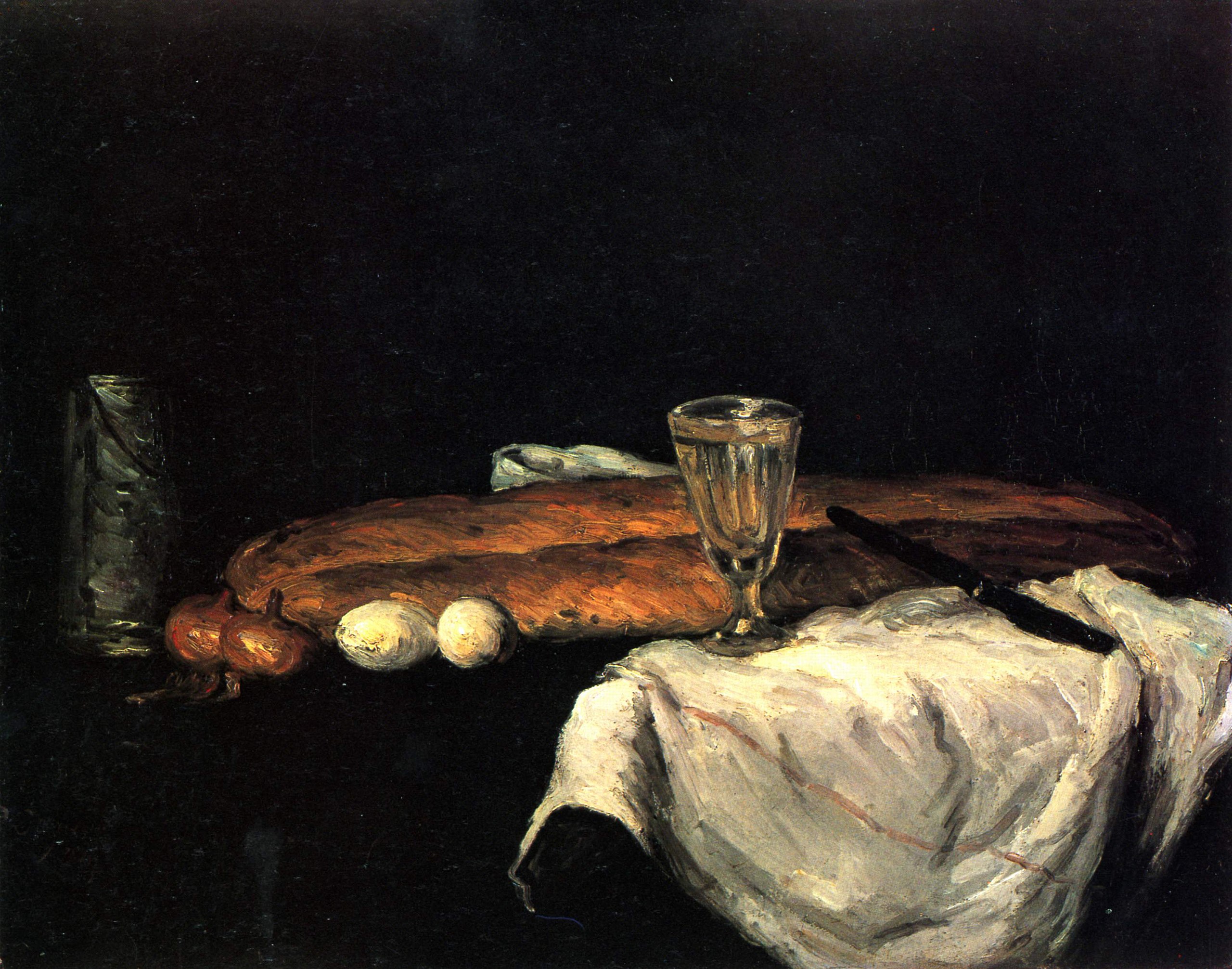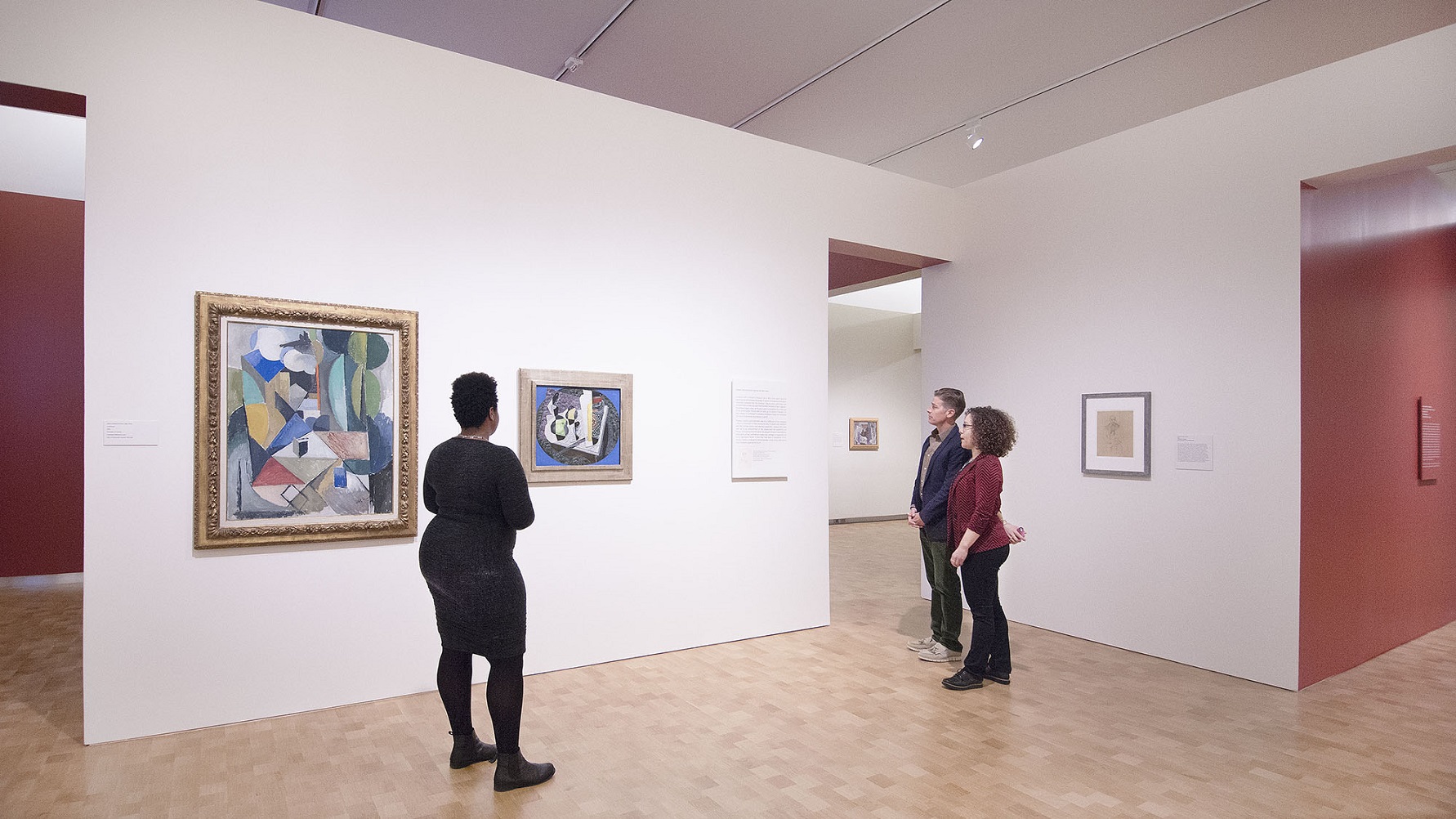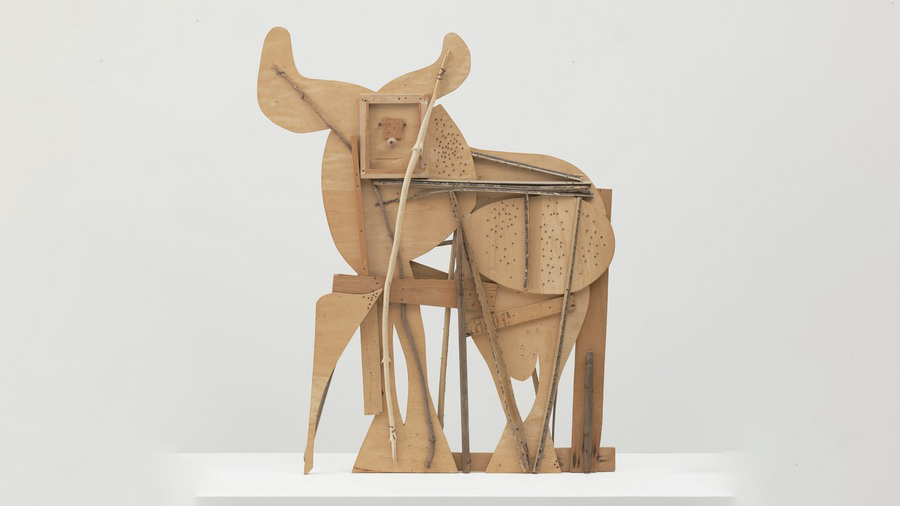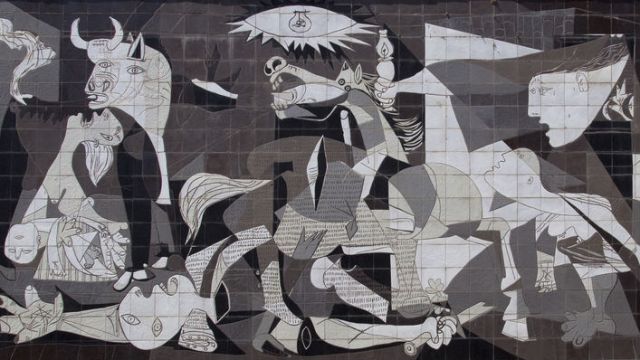Circle of Friends: Marc Chagall and Company
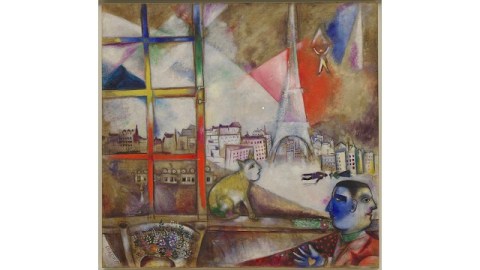
“[I]n La Ruche you either came out dead or famous,” Marc Chagall said of the Parisian refuge of bohemian artists from Eastern Europe that he called home during his first Paris period. French for “the beehive,” La Ruche buzzed both with creativity and camaraderie during Chagall’s time there. The circle of friends Chagall formed around himself influenced not only his art but widened his spirit as he witnessed a world far bigger than the Vitebsk village he left behind. In Paris Through the Window: Marc Chagall and His Circle at the Philadelphia Museum of Art, visitors gain access to Chagall’s circle of friends and get a sense not of a “hive mind,” but rather of a unity born of diversity sharing the same hardships and passions.
The prevailing style of art in Paris when Chagall arrived in May 1911 was Cubism. Pablo Picasso and Georges Braque wrote the book, or at least the first chapter, of Cubism, but they’re conspicuous by their absence from this exhibition. The museum staged Picasso and the Avant-Garde in Paris just last year, and even use some of the same paintings from that show in the current exhibition, but Paris Through the Window refuses to allow those twin towers of early modern art to overshadow the lesser-known artists allowed to shine here. There’s always a temptation to see schools as monolithic entities slavishly following the leaders, but Paris Through the Window opens a long-closed window onto different takes on Cubism.
Chagall learned Cubism from Jean Metzinger, who painted works such as Tea Time that portrayed the human figure, as curator Michael Taylor writes in the catalog, “appl[ying] Cubism’s spatial ambiguities and fragmentations” but without “dematerial[izing it] to the point of abstraction” as Picasso and Braque so often did. Seeing Tea Time, once called “the Mona Lisa of Cubism,” mingle with Chagall’s figures, the line of influence is clear. Metzinger teamed with close friend Albert Gleizes, whom Chagall years later called “a sort of Courbet of Cubism,” to write an early treatise on Cubism that Chagall hungrily consumed and incorporated into his work. Gleizes’ Woman at the Piano adds yet another take on Cubism for your consideration.
The focus, however, always remains on Chagall as the center of attention. The painting lending the exhibition its title (shown above) combines the recognizable landmark of the Eiffel Tower while adding the unrecognizable elements of a sphinx-faced cat, an upside-down train, and a two-faced figure in the foreground. “The Janus-faced man in the lower right corner of this painting may represent Chagall himself,” Taylor suggests, “whose work still looked eastward to the culture and traditions of his native Russia while also embracing the work of [Robert] Delaunay and other modern painters he had encountered in the west.” Taylor’s prose unpacks much of the baggage—aesthetic, emotional, and national—Chagall brought to such works.
Just as Janus is the god of beginnings and endings, the story of Chagall and his circle is that of beginnings and endings precipitated by the tumult of twentieth-century Europe. We all know the creamy, almost Rachmaninoff romanticism of Chagall’s paintings celebrating love and marriage, and those do appear here, but seeing Chagall’s watercolors of wounded World War I soldiers returning to Russia, where Chagall was trapped during the conflict, erases the caricature of Chagall as a one-note wonder. Works by friends of Chagall such as Moise Kogan and Max Jacob haunt one after the knowledge that their creators perished in the Holocaust that Chagall eluded by fleeing to America and ending his second Parisian period of 1923 through 1941. Upon returning to Paris after the war, Chagall explained, “Returning to France isn’t a project, it’s making a declaration of love. One rediscovers France as one rediscovers a woman one loves.”
Love of all kinds pervades Paris Through the Window—love of art, love of place, love of friends, love of a spouse, and love of community. The exhibition runs as part of the Philadelphia International Festival of the Arts (PIFA) celebrating the theme of “the artistic energy of Paris 1911-1920,” a fitting connection considering the communal nature of Chagall’s art and life. In our modern, atomized, Facebook “friends” society, it’s refreshing and inspirational to see the friendships and collaborations at the heart of Paris Through the Window: Marc Chagall and His Circle. Go see it. And bring a friend.
[Image: Marc Chagall, French (born Belorussia), 1887-1985. Paris Through the Window, 1913. Oil on canvas, 53 1/2 x 55 3/4 inches (135.8 x 141.4 cm). Solomon R. Guggenheim Museum, New York, Solomon R. Guggenheim Founding Collection, By gift 37.438. © 2010 Artists Rights Society (ARS), New York/ADAGP, Paris.]
[Many thanks to the Philadelphia Museum of Art for providing me with a review copy of the catalog to, the image above from, and other press materials for Paris Through the Window: Marc Chagall and His Circle, which runs through July 10, 2011.]
[A REQUEST AND A CONTEST:Please consider making a donation to help the people of Japan. Some of the organizations doing good in that terrible situation are Doctors Without Borders and The Red Cross. Please consider helping in some way. And if you do send a donation, mention it in the comments to this or any other post and I’ll put your name in a contest to win a copy of See/Saw: Connections Between Japanese Art Then and Now by Ivan Vartanian and Kyoko Wada (my review here). Honor rules apply, so you do not need to send “proof” of a donation. Also, the contest is open only to U.S. residents (but anyone can donate, of course). Contest ends at midnight EDT on April 1, 2011 and a name will be pulled from a hat the next day.]
